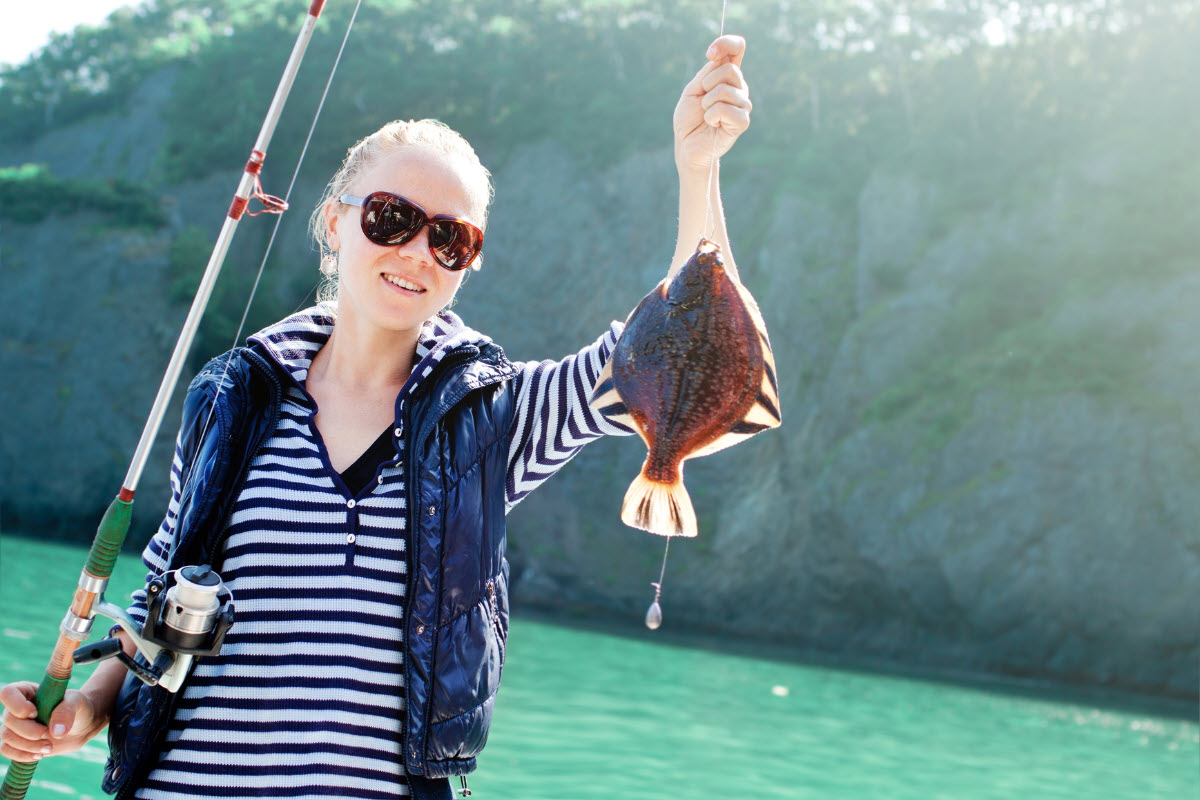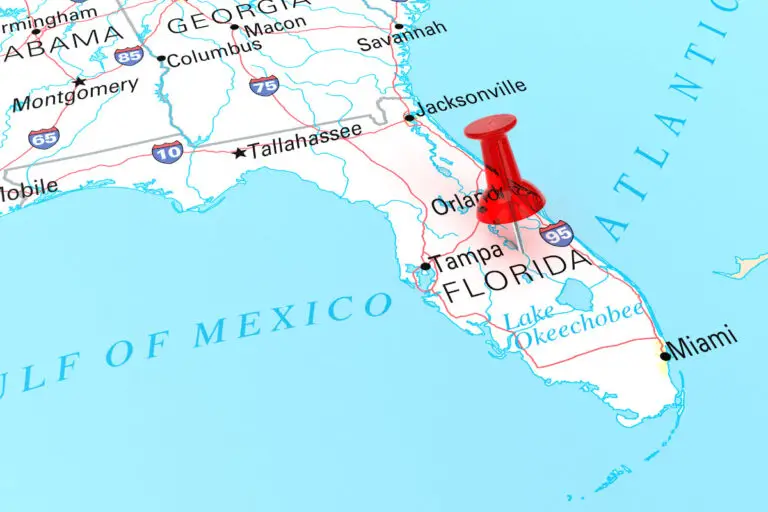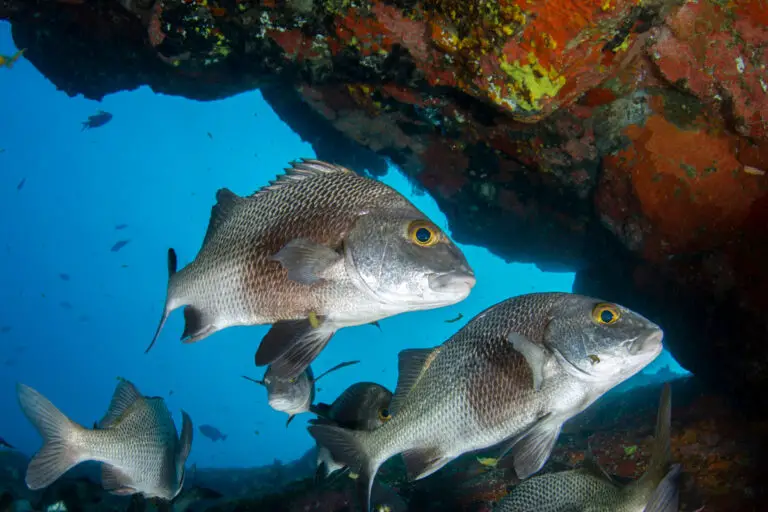Texas Flounder Limits: How to Stay Compliant and Catch Your Limit
Estimated reading time: 11 minutes
Flounder fishing is a popular recreational activity in Texas, but it is important for anglers to be aware of the flounder limits in Texas. The Texas Parks and Wildlife Department (TPWD) has set specific regulations to protect the flounder population and ensure the sustainability of the fishery. These regulations include size and bag limits, which vary depending on the location and time of year. In this article, we will discuss the Texas flounder size limit and flounder bag limit in Texas and answer the common question of “how many flounder can you keep in Texas?” to help anglers comply with the regulations and enjoy their fishing experience.
Texas Flounder Limits
The Texas Parks and Wildlife Department (TPWD) limits the number of flounder recreational anglers catches daily. These regulations are in place to ensure the conservation of flounder populations in Texas waters and to maintain a sustainable fishery for future generations.
The flounder limit in Texas is two per person per day, with a minimum size limit of 14 inches.
It is important to adhere to these limits and properly measure any flounder caught before keeping them to avoid fines and penalties. Anglers are also encouraged to practice catch and release to further conserve the flounder population.
The Importance of Adhering to Flounder Limits in Texas
- Protecting the Flounder Fishery: Adhering to Texas flounder regulations is important for the health and longevity of the state’s flounder fishery. Limiting the number of flounder caught ensures that the population remains sustainable for future generations to enjoy.
- Fall Migration: Flounders typically migrate during the fall months, making them vulnerable to overfishing. By adhering to catch limits and regulations, anglers can help preserve the flounder population during this critical time.
- Flounder Regulations: The TPWD has implemented flounder regulations to help manage and conserve the species. These regulations include a daily bag limit of two flounder per person and a minimum size limit of 15 inches.
- Flounder Larvae Require Saltwater: Flounder larvae require saltwater to survive and grow, making them particularly vulnerable to habitat destruction and pollution. By following flounder regulations, anglers can help protect the flounder larvae and their habitat.
- Supporting the Ecosystem: Flounder play an important role in the ecosystem, serving as a food source for larger fish and other marine animals. By adhering to catch limits and regulations, anglers can help support a healthy ecosystem and protect other species that rely on flounder.
Overview of Texas flounder limit
Recreational fishermen in Texas are subject to a limit on how much flounder they can catch. The TPWD sets and enforces the flounder limit through regulations.
The TPWD relies on this data to make informed decisions about managing the flounder fishery, which is crucial for ensuring the long-term sustainability of Texas’s flounder population. This is why flounder regulations are in place to protect the fish during their fall migration from bays to the Gulf of Mexico, where they spawn. Warmer winters can disrupt the specific environmental conditions required for flounder larvae to survive, devastatingly impacting the species.
By adhering to the flounder limit, recreational fishermen play a critical role in conserving the species. The limit helps ensure that the annual migrations of flounder are not overfished, allowing for a healthy population to thrive in Texas waters. This is important for preserving the flounder population and maintaining a balanced ecosystem, and ensuring the survival of other species that rely on flounder as a food source.
Texas Flounder Limit Regulations
Explanation of Texas Parks and Wildlife Department’s (TPWD) Regulations
The Texas Parks and Wildlife Department (TPWD) is responsible for managing the state’s fish and wildlife resources, including the flounder fishery. TPWD has established regulations to ensure the flounder population’s sustainability and promote responsible fishing practices. Here are some key regulations that recreational and commercial fishermen should be aware of:
Flounder Gigging Regulations:
- Flounder gigging is allowed in Texas, but there are restrictions on the size and number of flounder that can be taken.
- The daily bag limit for gigging flounder is two fish per person, and the minimum size limit is 14 inches.
- Gigging is prohibited in some areas, including the Galveston Bay Complex and Sabine Lake.
- TPWD may issue citations to violators of the flounder gigging regulations.
Changes to Flounder Regulations:
- In November 2020, TPWD implemented new regulations for flounder fishing in state waters to help protect the species during its annual migration.
- The TPWD made new rules that lower the number and size of flounder recreational and commercial fishermen can catch in Texas.
- They also banned fishing hooks during the flounder run to protect the species.
Enforcement and Penalties:
- The Texas Parks and Wildlife Department (TPWD) enforces fishing regulations in Texas.
- Breaking flounder fishing regulations can result in penalties such as fines, imprisonment, and license suspension or revocation.
- The severity of the penalties depends on the nature and severity of the violation.
To keep the fishery healthy for the future, anglers should follow the rules set by TPWD. This will help make sure there are always enough flounder in Texas.
Comparison of Bag Limit and Size Limit
Bag limit and size limit are both regulations set by state wildlife agencies to manage fish populations and ensure sustainable fishing practices.
Bag limit refers to the maximum number of fish a person can legally harvest and possess in a single day or trip. This possession limit is set to prevent overfishing and ensure that there are enough fish to sustain populations. In Texas, the bag limit for southern flounder is 5 fish per day.
Size limit refers to the minimum size of a fish that a person can legally harvest and possess. This possession limit allows fish to reach maturity and reproduce before harvesting. In Texas, the minimum length limit for southern flounder is 14 inches.
Other states may have different bag and size limits for different fish species, depending on the health and abundance of the population. It is important for anglers to check the regulations for the specific species and location where they plan to fish to ensure compliance with the rules and avoid penalties and fines.
Discussion of Fishing Seasons and Areas
Flounder fishing seasons and areas in the United States can vary depending on the state and region. For example, in Texas, the southern flounder season typically runs from mid-November to mid-December, and the bag limit is two fish per person per day. In contrast, in North Carolina, flounder season is open year-round, with a size limit of 15 inches and a bag limit of 10 fish per person daily.
When considering flounder fishing areas, it is important to note that these fish are found in saltwater and freshwater environments. Along the Atlantic coast, flounder fishing areas can include bays, inlets, and nearshore waters. Flounder fishing areas on the Gulf coast include bays, passes, and jetties. Flounder fishing areas can include rivers, streams, and estuaries in freshwater environments.
It is important for anglers to check their state’s regulations for specific information on flounder fishing seasons and areas, as well as size and bag limits. Additionally, it is crucial to practice ethical fishing techniques, such as catching and releasing and using appropriate gear, to ensure the sustainability of flounder populations for future generations of anglers.
Penalties and Consequences of Violating the Limit
Violating flounder limits in Texas can result in severe consequences, including fines, license suspension, and criminal charges. The TPWD enforces the flounder regulations and has the authority to issue citations for violating these rules. Recreational and commercial anglers must adhere to the limits and regulations to avoid these penalties.
Citations for violating the flounder limit may result in fines ranging from $100 to $500 or more, depending on the severity of the violation. Repeated violations can sometimes result in license suspension or revocation, impacting an angler’s ability to fish in Texas waters.
The consequences of violating the flounder limit can also impact the health and sustainability of the flounder population in Texas. Fall flounder migration brings much fishing pressure to the state’s waters, and overfishing can negatively impact the population. Recreational anglers can help preserve the future of the flounder fishery by following the rules and limits set by TPWD. This will ensure that the flounder population stays healthy and abundant for years.
Maximizing Your Catch Within Flounder Limit
Tips For Catching Flounder Within the Limit
Flounder fishing is a thrilling and fulfilling activity for anglers in southern states like Texas, Louisiana, Alabama, South Carolina, and Florida. These states are popular destinations for recreational flounder fishing. However, it is crucial to adhere to the regulations set by the local wildlife conservation agencies to ensure the flounder population’s well-being and sustainability.
Below are some tips to help you in catching flounder while adhering to the regulations:
Equipment:
- You can use a gigging flounder or a fishing rod with lures and dead bait to catch flounder.
- Ensure that the equipment suits the size of the flounder you intend to catch.
Location:
- Know where you can and cannot fish. Some areas may be off-limits, and the open season may vary by location.
- Pay attention to the annual flounder migration and try to fish in areas where flounder are known to congregate.
Technique:
- Keep your boat as quiet as possible to avoid spooking flounder.
- Use a slow and steady approach to gigging flounder or retrieving lures to mimic natural movements.
- Watch for fluke, which is often found near flounder and can indicate the presence of flounder in the area.
Following these tips can increase your chances of catching flounder while maintaining the health and sustainability of the flounder population in Texas waters. Remember to always obtain a Texas fishing license and follow all state regulations while fishing.
Recommended Fishing Gear and Techniques
Gear for Flounder Fishing:
- Fishing Rod: A medium to heavy power fishing rod, depending on the size of flounder you are targeting.
- Reel: A spinning reel that matches your rod.
- Line: 10 to 20 lb test monofilament or fluorocarbon line.
- Use circle hooks ranging from 2/0 to 5/0 based on your bait size.
- Opt for live or dead shrimp, finger mullet, or mud minnows as your bait of choice.
- Select soft plastic jigs in natural colors like root beer, pumpkinseed, or olive green.
Techniques for Flounder Fishing:
- One effective method for flounder fishing is called drift fishing. This technique involves letting your bait float along with the current until a flounder bites.
- Another effective technique is bottom fishing, where you anchor your boat or use a trolling motor to stay in one spot and cast your bait onto the bottom.
- Using a soft plastic jig is a popular and effective method for catching flounder. Cast the jig and retrieve it slowly along the bottom, bouncing it occasionally to mimic a natural movement.
- For flounder fishing at night, gigging is a technique that involves using a spear or gig to catch flounder in shallow waters.
By using the right gear and techniques, you can increase your chances of catching flounder while staying within the regulations set by the Texas Parks and Wildlife Department. Remember to obtain a fishing license and follow all state regulations while fishing.
Understanding Flounder Behavior and Habitat
Southern flounder is a popular game fish found on the Texas coast. The flounder run in the fall is a highly anticipated event for recreational fishermen. During this time, gigging for flounder is a popular activity. Flounder gigging involves wading in shallow water with a spear-like device called a gig to catch flounder.
The Texas Parks and Wildlife Department has implemented regulations to conserve the flounder fishery. One of these regulations includes a daily bag limit of two flounder per person. This regulation is important to ensure the sustainability of the flounder population.
In the past few years, warmer winters have impacted how flounder migrate each year. The Texas Parks and Wildlife Department has conducted creel surveys to monitor the flounder population.
Recreational fishermen can help keep the flounder population healthy and ensure future generations can enjoy fishing for them by following the flounder regulations.
Frequently Asked Questions
The daily bag limit for southern flounder in Texas is 5 fish per person, and the minimum size limit is 14 inches in total length. This applies to both recreational and commercial fishermen.
Yes, there are some areas in Texas where flounder fishing is prohibited or restricted. These areas include certain state parks, marine sanctuaries, and other designated areas. It is important to check the regulations before fishing in any area to avoid penalties and fines.
The Texas Parks and Wildlife Department may issue citations to recreational and commercial fishermen who violate the flounder limits. Not following the flounder fishing rules can result in serious consequences, such as having to pay fines or do community service and in some cases, losing your fishing license. It is crucial to obey the regulations to keep the flounder population healthy and sustainable.
Other Sources
- Texas Parks and Wildlife Department: https://tpwd.texas.gov/fishboat/fish/recreational/rules/regulations/
Summary
Fishing for flounder in Texas is a popular activity, but following TPWD’s rules to protect the flounder population is essential. These rules limit how many flounders an angler can catch and their size, and following them helps maintain a healthy population for the future.
It is important to measure the flounder before keeping them, as knowing the fishing areas’ rules and using the right equipment and methods. Breaking the rules can harm the flounder population and result in fines and penalties.



![Texas Saltwater Fish Limits [2023]: Top 30 Game Fish](https://cdn-0.activeatthebeach.com/wp-content/uploads/2021/08/Texas-Saltwater-Fish-Limits-Feature-v2-768x497.jpg)
![Florida Saltwater Fish Limits [2023]: Top 50 Game Fish](https://cdn-0.activeatthebeach.com/wp-content/uploads/2021/08/Snook-768x497.jpg)
![Texas Freshwater Fish Limits [2023]: Top 27 Game Fish](https://cdn-0.activeatthebeach.com/wp-content/uploads/2021/11/Texas-Freshwater-Fish-Limits-768x497.jpg)


